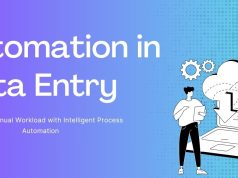The process of converting various forms of information into digital text formats powers everything from customer databases to global research projects. With the exponential growth of data in our information-driven economy, mastering efficient textual data entry has become more crucial than ever for businesses seeking competitive advantage.
Understanding the Core of Textual Data Entry
Textual data entry involves the systematic input of alphanumeric information into computer systems, transforming physical or unstructured digital content into organized, searchable, and analyzable data assets. Whether you’re managing customer records, transcribing documents, or building complex databases, the quality and efficiency of your data entry processes directly impact operational performance and decision-making capabilities.
According to recent industry reports, organizations that implement streamlined textual data entry processes experience up to 37% improvement in operational efficiency. This significant enhancement stems from reduced error rates, faster information retrieval, and more reliable data-driven decision making accuracy.
The Evolution of Textual Data Entry Methods
Textual data entry has undergone remarkable transformation since its inception. Understanding this evolution provides valuable context for current best practices and future trends.
Traditional Manual Data Entry
Initially, textual data entry relied entirely on human operators transcribing information from physical documents into digital systems. This approach, while straightforward, presented significant challenges:
- High error rates due to human fatigue
- Limited throughput capacity
- Inconsistent formatting and standards
- Substantial labor costs
Despite these limitations, manual data entry remains essential for specific applications where human judgment and interpretation are required, particularly when processing handwritten documents, contextual information, or documents with poor image quality.
Semi-Automated Data Entry Solutions
The introduction of scanning technologies combined with Optical Character Recognition (OCR) revolutionized the industry by enabling partial automation of textual data entry. These systems can capture printed text and convert it to editable digital formats, though they typically require human verification and correction.
Semi-automated solutions strike a balance between efficiency and accuracy, offering:
- Faster processing than purely manual methods
- Reduced but not eliminated human involvement
- Cost-effective scaling for medium-volume needs
- Flexibility in handling various document types
Fully Automated Data Entry Systems
Modern textual data entry has evolved to incorporate sophisticated AI-driven automation tools that minimize human intervention. According to research published in the systems achieve accuracy rates exceeding 98% for standardized documents, representing a paradigm shift in processing capabilities.
Advanced systems leverage multiple technologies:
- Machine learning algorithms that improve with usage
- Natural Language Processing (NLP) for contextual understanding
- Intelligent document recognition for automated classification
- Cloud-based processing for scalable deployment
Critical Factors for Successful Textual Data Entry
Data Quality Assurance Protocols
The value of textual data entry directly correlates with the quality of information produced. Implementing robust quality assurance protocols ensures that entered data meets organizational standards and supports reliable analysis.
Essential quality control measures include:
- Double-key verification: Having two operators independently enter the same data and comparing results
- Automated validation rules: Implementing system checks for format consistency, value ranges, and logical relationships
- Regular audit sampling: Performing random checks on processed data to measure error rates
- Standardized correction procedures: Establishing clear protocols for addressing identified errors
Organizations with structured quality assurance frameworks report error rates below 0.5%, compared to 3-7% in operations without formal protocols.
Ergonomic Considerations for Data Entry Operators
Overlooking ergonomic factors in textual data entry operations significantly impacts both productivity and accuracy. A comprehensive approach should address:
- Workstation design: Properly positioned monitors, adjustable chairs, and ergonomic keyboards
- Lighting conditions: Adequate, non-glare lighting that reduces eye strain
- Work scheduling: Regular breaks to prevent fatigue and repetitive strain injuries
- Environmental factors: Noise control and temperature regulation
Studies from the International Ergonomics Association demonstrate that ergonomically optimized workstations increase data entry productivity by up to 25% while reducing error rates by nearly 30%.
Technological Advancements Transforming Textual Data Entry
Artificial Intelligence and Machine Learning Integration
The integration of AI and machine learning represents the most significant advancement in modern textual data entry. These technologies enable:
- Pattern recognition: Identifying and learning from recurring data structures
- Automated error detection: Flagging anomalies and inconsistencies
- Predictive text completion: Suggesting likely entries based on historical patterns
- Continuous improvement: Self-optimizing systems that learn from corrections
Industry leaders at Data Entry Ninja have pioneered implementations that reduce processing time by up to 70% while maintaining superior accuracy levels.
Cloud-Based Data Entry Solutions
Cloud platforms have revolutionized textual data entry by providing:
- Scalable resources: Adjusting processing capacity based on demand
- Geographic flexibility: Enabling distributed data entry teams
- Real-time collaboration: Supporting simultaneous work on shared datasets
- Enhanced security: Implementing enterprise-grade protection for sensitive information
According to market research by Gartner, cloud-based data entry solutions are experiencing 43% year-over-year growth, reflecting their significant operational advantages.
Best Practices for Optimizing Textual Data Entry Efficiency
Standardized Templates and Formatting Guidelines
Consistency serves as the foundation for efficient textual data entry. Organizations achieving the highest productivity levels implement:
- Standardized input forms: Creating uniform templates for common data types
- Clear formatting guidelines: Establishing conventions for dates, addresses, and other variable formats
- Field validation rules: Defining acceptable values and formats for each data element
- Visual cues: Using color coding and layout design to improve navigation speed
When properly implemented, standardization reduces processing time by approximately 40% and significantly decreases error rates by eliminating ambiguity.
Strategic Workflow Design and Task Allocation
Efficient textual data entry requires thoughtful workflow orchestration:
- Batching similar tasks: Grouping comparable documents to reduce cognitive switching costs
- Skill-matching assignment: Aligning task complexity with operator expertise
- Progressive data processing: Moving systematically through logical processing stages
- Parallel processing: Distributing components of large projects across multiple operators
Organizations implementing structured workflow designs report throughput improvements averaging 50% compared to ad-hoc processing approaches.
Measuring and Improving Textual Data Entry Performance
Key Performance Indicators for Data Entry Operations
Effective management requires establishing and monitoring relevant metrics:
- Keystroke rate: Measuring input speed (typically 8,000-12,000 keystrokes per hour for proficient operators)
- Error rate: Calculating mistakes per 1,000 fields or characters
- Completion time: Tracking average processing duration by document type
- First-pass yield: Measuring percentage of documents processed correctly without rework
By establishing baseline measurements and improvement targets, organizations can systematically enhance performance. Regular benchmarking against industry standards provides valuable context for evaluating operational excellence.
Continuous Training and Skill Development
Investment in ongoing operator development yields substantial returns:
- Technical proficiency training: Improving system knowledge and keyboard skills
- Domain-specific education: Enhancing understanding of industry terminology and context
- Error pattern analysis: Identifying and addressing individual performance gaps
- Cross-training: Developing versatility to handle various document types
According to research from the Association for Data Management Professionals, operators receiving structured ongoing training outperform untrained counterparts by 62% in accuracy and 47% in speed.
Industry-Specific Textual Data Entry Applications
Healthcare Information Management
The healthcare sector presents unique textual data entry challenges and requirements:
- Patient record digitization: Converting paper charts to electronic health records
- Medical coding: Translating diagnoses and procedures into standardized codes
- Prescription processing: Ensuring accurate medication information transfer
- HIPAA compliance: Maintaining strict privacy and security protocols
Healthcare organizations implementing optimized textual data entry processes report 28% reduction in administrative costs and 41% improvement in record retrieval times.
Financial Services Data Processing
Financial institutions handle vast volumes of text-based information requiring exceptional accuracy:
- Transaction processing: Recording financial exchanges across various systems
- Customer onboarding: Capturing comprehensive client information
- Regulatory compliance documentation: Maintaining required records for legal purposes
- Risk assessment data: Collecting information for underwriting and evaluation
With properly structured textual data entry systems, financial organizations achieve 99.9% accuracy rates—a necessity in an industry where even minor errors can have significant consequences.
Future Trends in Textual Data Entry
The textual data entry landscape continues to evolve, with several emerging trends poised to reshape practices:
Voice-to-Text Integration
Advanced speech recognition technology is rapidly maturing, offering:
- Hands-free data entry: Enabling operators to dictate rather than type
- Multilingual capabilities: Supporting diverse language processing
- Context-aware interpretation: Understanding industry-specific terminology
- Continuous learning: Adapting to individual speech patterns over time
Current voice recognition systems achieve accuracy rates of 95-97% under optimal conditions, approaching the performance of skilled human operators.
Blockchain for Data Integrity Verification
Blockchain technology provides promising applications for textual data entry validation:
- Immutable audit trails: Creating permanent records of data modifications
- Distributed verification: Enabling consensus-based confirmation of accuracy
- Enhanced security: Protecting against unauthorized alterations
- Smart contract implementation: Automating verification protocols
Early adopters report significant improvements in data trustworthiness and reduced verification overhead.
Conclusion: The Strategic Value of Optimized Textual Data Entry
In today’s data-driven business environment, textual data entry transcends its traditional perception as a mundane administrative function. Organizations recognizing its strategic importance gain substantial competitive advantages through enhanced information accessibility, improved decision support, and operational efficiency.
By implementing the principles and practices outlined in this guide, businesses can transform their textual data entry operations from cost centers to value-generating assets. Whether you’re revamping existing processes or building new capabilities, prioritizing efficiency, accuracy, and technological integration will yield measurable returns on investment.
For personalized guidance on optimizing your textual data entry operations, visit Numeric Data Entry to explore more additional Data Entry sub industries










